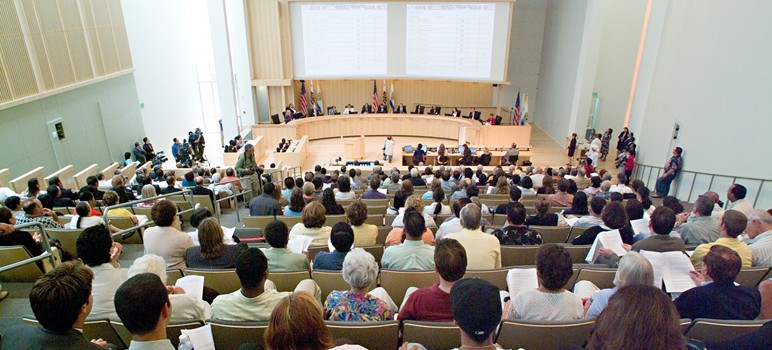The City of San Jose’s Housing Department recently released its recommendations regarding potential modifications to the City’s Affordable Housing Impact Fee (AHIF) and Inclusionary Zoning ordinances. These include the creation of an “onsite mitigation” option, which, as proposed, would allow developments built on publicly owned land to reduce their required AHIF by providing affordable apartments on-site, under certain conditions.
SV@Home strongly supports the creation of an alternative method for developers to meet their affordable housing requirements through onsite mitigation. However, we are concerned that the current recommendations are too restrictive. We want to ensure that the new on-site mitigation option is truly a viable choice – one that all developers could, when best for their project or site, willingly opt in to, and that is equally as feasible as paying the AHIF outright. This is critical if we want to ensure that this policy change actually meets the intended goal of making housing development and the delivery of affordable units more feasible overall.
Several of the proposed onsite mitigation requirements would be very difficult for any developer to meet, making the entire possibility of adding to the City’s affordable housing stock through this alternative compliance method highly unlikely. Aside from providing this option only to projects built on publicly owned land, other restrictive requirements are as follows:
- Affordable units provided by developers seeking to avail of the onsite mitigation option include an affordability mix that is proportionate to the housing need determined by the City’s 2014 nexus study. The required mix would thus be as follows: 2.5% extremely low-income units, 5.1% very low-income units, and 5.3% low-income units. Additionally, if a developer exceeds the percentage required for any one income category, none of these units in excess will be credited to another income category.
- Affordable units provided by developers must be provided onsite and cannot be credited to another site.
- Developers cannot use onsite mitigation to meet the moderate income housing need that their project creates. In other words, all developers would still be required to pay the AHIF amount determined to mitigate the need for moderate income housing.
Instead of these rigid requirements, SV@Home urges the City to adopt a more flexible approach that allows all developers the option of onsite mitigation and that both meets the City’s identified housing needs as well as the specific needs of a given development.
Because affordable housing impact fees are typically set far below the maximum justifiable fee, the fees paid by a developer actually do not provide a full mitigation of the housing need that their new development creates. Thus, as a practical matter, onsite mitigation yields more affordable units than could be produced using the affordable housing impact fees that a developer would otherwise be required to pay. This is why SV@Home believes that the City should encourage this option by removing any barriers that would render it unfeasible. Without doing so, the City will lose out on the opportunity for the creation of affordable homes that would contribute to easing Silicon Valley’s housing affordability crisis.
